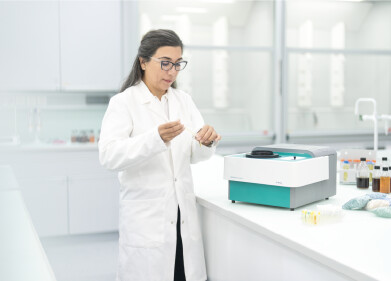Mass Spectrometry & Spectroscopy
What's the Difference Between White and Brown Fat?
Aug 20 2018
It's no secret that fat is bad for the waistline, not to mention internal organs and overall health. Now a team of bioengineers from the Columbia University School of Engineering and Applied Science have pioneered an innovative new technique that converts brown adipose tissue (BAT) into white adipose tissue (WAT). Using a simple tissue-grafting approach, the scientists have successfully managed to increase brown fat mass in the body, a method that could eventually be used to boost the metabolism, combat obesity and reduce symptoms of diabetes.
Stimulating the "browning" process
Simple yet effective, the cell-therapy approach sees white adipose tissue extracted from the body and converted into brown fat. This is done by culturing tissue fragments in media-containing growth factors, a process that can take up to three weeks. The "browning" process was measured using a handful of biomarkers, including mitochondrial activity and the presence of UCP1, a brown fat protein marker. The new brown fat was then retransplanted in the patient using a grafting procedure commonly performed by plastic surgeons during cosmetic and reconstructive surgery.
Led by professor of biomedical engineering Sam Sia, the Scientific Reports study builds on previous research spotlighting the energy-burning capacity of brown fat tissue in both humans and animals.
"Our approach to increasing brown fat is potentially safer than drugs because the only thing going into patients is their own tissue, and it's highly controllable because we can tune the amount of brown fat we inject," explains Sia. "The process is also so simple that it could be potentially performed using an automated system within a doctor's office or clinic."
Combating the obesity epidemic with cell-therapy
The team are currently working on refining techniques, tweaking dosages and planning further studies and trials. There's plenty of optimism surrounding the project, with the exciting advance breaking new ground when it comes to developing long-term weight-loss solutions and combating the obesity epidemic, which currently afflicts 78 million adults and 13 million children in the US alone.
"The persistence of the converted brown fat is very important because we know that when white fat is naturally stimulated to turn to brown fat in vivo, through cold exposure for example, it can rapidly change back when the stimulation is removed," says study co-author Brian Gillette. "Even though we could repeat the procedure several times if we needed to, since it's minimally invasive, it is critical that the brown fat survives well and remains stable so that it can function as an effective therapy."
For a closer look at the latest medical breakthroughs don't miss 'Choosing the Optimum Plasma Spectrochemistry Technique for Measuring Elemental Impurities in Pharmaceuticals', an explanatory article adapted from a chapter in Robert Thomas’s new book, 'Measuring Elemental Impurities in Pharmaceuticals: A Practical Guide'.
Digital Edition
Lab Asia 31.6 Dec 2024
December 2024
Chromatography Articles - Sustainable chromatography: Embracing software for greener methods Mass Spectrometry & Spectroscopy Articles - Solving industry challenges for phosphorus containi...
View all digital editions
Events
Jan 22 2025 Tokyo, Japan
Jan 22 2025 Birmingham, UK
Jan 25 2025 San Diego, CA, USA
Jan 27 2025 Dubai, UAE
Jan 29 2025 Tokyo, Japan



















